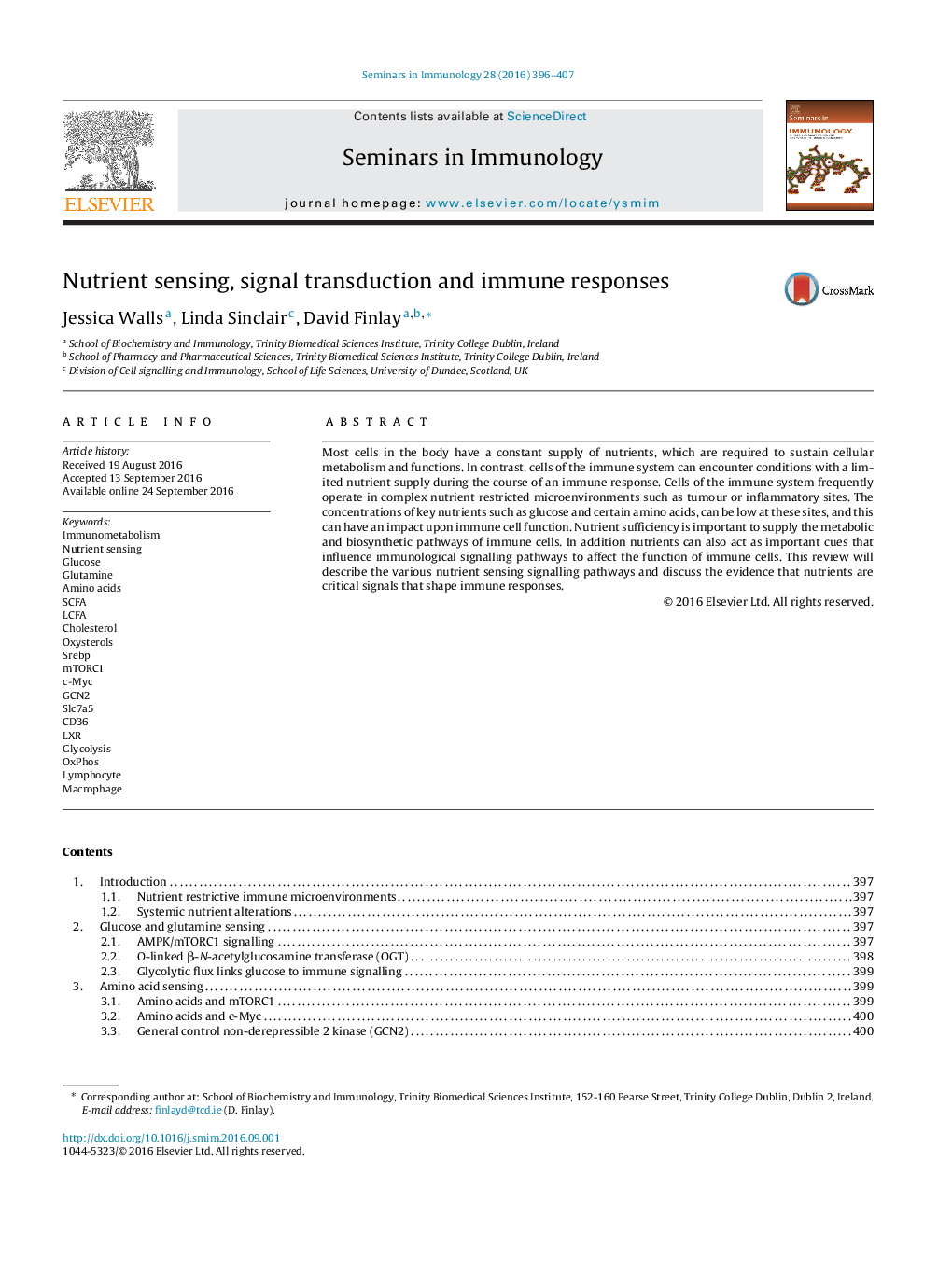| کد مقاله | کد نشریه | سال انتشار | مقاله انگلیسی | نسخه تمام متن |
|---|---|---|---|---|
| 5670384 | 1408008 | 2016 | 12 صفحه PDF | دانلود رایگان |
- Nutrients are important cues that shape immune responses.
- Glucose and glutamine impact upon AMPK activation and O-GlcNAcylation with important implications for T cell responses.
- MTORC1 and GCN2 are important amino acid sensitive signalling pathways with widespread immunoregulatory roles.
- Short and long chain fatty acids exert anti-inflammatory actions through multiple signalling pathways.
- Cholesterol and Oxysterols control metabolism and immune function through the Srebp transcription factors.
Most cells in the body have a constant supply of nutrients, which are required to sustain cellular metabolism and functions. In contrast, cells of the immune system can encounter conditions with a limited nutrient supply during the course of an immune response. Cells of the immune system frequently operate in complex nutrient restricted microenvironments such as tumour or inflammatory sites. The concentrations of key nutrients such as glucose and certain amino acids, can be low at these sites, and this can have an impact upon immune cell function. Nutrient sufficiency is important to supply the metabolic and biosynthetic pathways of immune cells. In addition nutrients can also act as important cues that influence immunological signalling pathways to affect the function of immune cells. This review will describe the various nutrient sensing signalling pathways and discuss the evidence that nutrients are critical signals that shape immune responses.
Journal: Seminars in Immunology - Volume 28, Issue 5, October 2016, Pages 396-407
